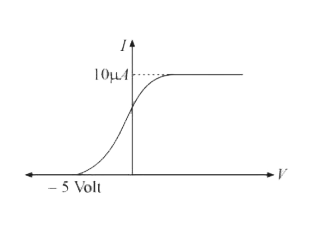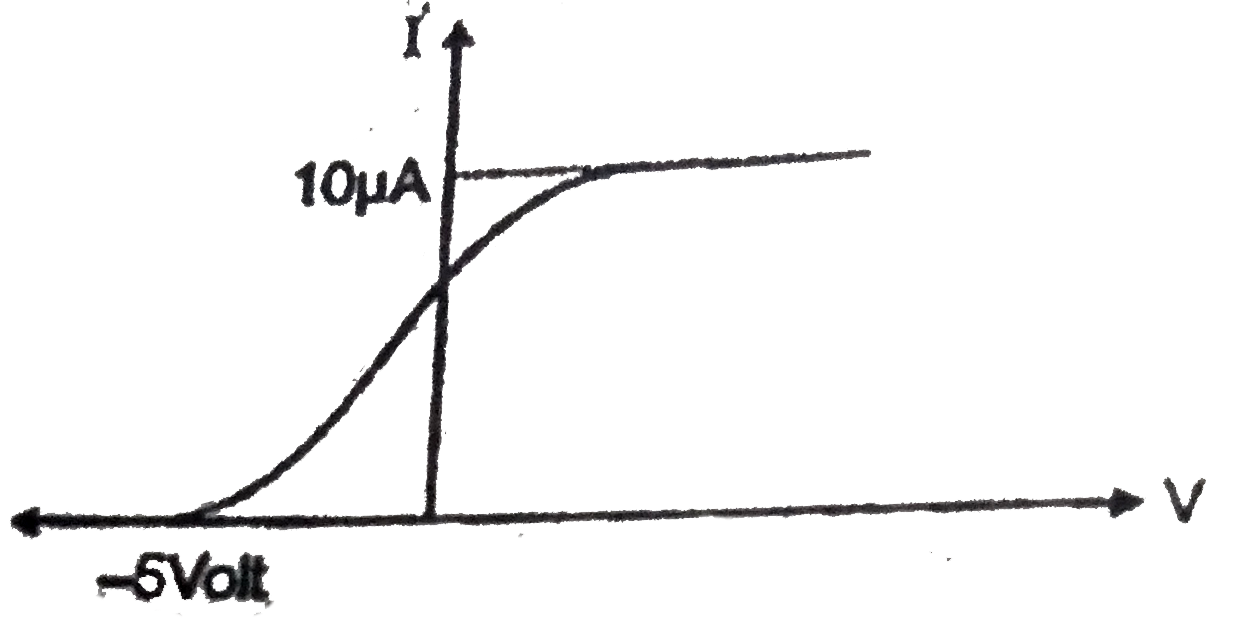In a photoemission experiment the maximum KE of photoelectrons from metalsP,Q,R are EP, EQ, ER and they are related by Ep=2EQ=2Er. In this experiment the same sources of monochromatice light is used for metals P and Q while a different source of monochromatic light is used for metal R. Work functions for metals P,Q,R are 4 eV, 4.5eV and 5.5eV. Energy of incident photon used for metal R in eV is
To solve the problem, we will use the photoelectric effect equation, which relates the kinetic energy (KE) of emitted photoelectrons to the energy of the incident photons and the work function of the material.
1. Understanding the Relationships:
Given the relationships between the maximum kinetic energies of photoelectrons from metals P, Q, and R:
EP=2EQ=2ER
Let's denote:
ER=x(for metal R)
Then:
EQ=x(for metal Q)
And:
EP=2x(for metal P)
2. Work Functions:
The work functions for metals P, Q, and R are given as:
- ϕP=4eV
- ϕQ=4.5eV
- ϕR=5.5eV
3. Using the Photoelectric Equation:
The photoelectric equation is given by:
KE=hf−ϕ
For each metal, we can write:
- For metal P:
EP=hf−ϕP⟹2x=hf−4
- For metal Q:
EQ=hf−ϕQ⟹x=hf−4.5
- For metal R:
ER=hfR−ϕR⟹x=hfR−5.5
4. Setting Up the Equations:
From the equations, we can express hf in terms of x:
- From metal P:
hf=2x+4(1)
- From metal Q:
hf=x+4.5(2)
5. Equating the Two Expressions for hf:
Set equations (1) and (2) equal to each other:
2x+4=x+4.5
Rearranging gives:
2x−x=4.5−4⟹x=0.5
6. Finding hf:
Substitute x=0.5 back into either equation to find hf:
Using equation (2):
hf=0.5+4.5=5eV
7. Finding the Energy of Incident Photon for Metal R:
Now, substitute x=0.5 into the equation for metal R:
0.5=hfR−5.5
Rearranging gives:
hfR=0.5+5.5=6eV
Final Answer:
The energy of the incident photon used for metal R is 6eV.
Given the relationships between the maximum kinetic energies of photoelectrons from metals P, Q, and R:
EP=2EQ=2ER
Let's denote:
ER=x(for metal R)
Then:
EQ=x(for metal Q)
And:
EP=2x(for metal P)
The work functions for metals P, Q, and R are given as:
- ϕP=4eV
- ϕQ=4.5eV
- ϕR=5.5eV
The photoelectric equation is given by:
KE=hf−ϕ
For each metal, we can write:
- For metal P:
EP=hf−ϕP⟹2x=hf−4
- For metal Q:
EQ=hf−ϕQ⟹x=hf−4.5
- For metal R:
ER=hfR−ϕR⟹x=hfR−5.5
From the equations, we can express hf in terms of x:
- From metal P:
hf=2x+4(1)
- From metal Q:
hf=x+4.5(2)
Set equations (1) and (2) equal to each other:
2x+4=x+4.5
Rearranging gives:
2x−x=4.5−4⟹x=0.5
Substitute x=0.5 back into either equation to find hf:
Using equation (2):
hf=0.5+4.5=5eV
Now, substitute x=0.5 into the equation for metal R:
0.5=hfR−5.5
Rearranging gives:
hfR=0.5+5.5=6eV
The energy of the incident photon used for metal R is 6eV.
Topper's Solved these Questions
Similar Questions
In the photoelectric experiment, if we use a monochromatic light, theI–V curve is as shown. If work function of the metal is 2 eV, estimate the power of light used. (Assume efficiency of photo emission =10−3, i.e. number of photoelectrons emitted are 10−3 times of number of photons incident on metal).

View SolutionA light source of wavelength λ illuminates a metal and ejects photoelectron with (KE)max=1eV.
Another light source of wave length λ3, ejects
photoelectrons from same metal with (KE)max=5eV.
Find the value of work function (eV) of metal.
View Solution
Knowledge Check
The animals which possess backbone are called P, e.g., Q and R. Here P, Q, and R are respectively
Avertebrates, birds, reptilesBvertebrates, insects, snailsCinvertebrates, snakes, birdsDinvertebrates, humans, reptiles.A photon energy 3.4eV is incident on a metal having work function 2eV. The maximum K.E. of photoelectrons is equal to
A1.4eVB1.7eVC5.4eVD6.8eVLight of waelength 4000Å is incident on a metal plate with work function 2eV. The max. K.E. of the photoelectrons is
A2 eVB1.5eVC1.1 eVD1.47 eV
Two photons, each of energy 2.5 eV are simultaneously incident on the metal surface. If the work function of the metal is 4.5 eV, then from the surface of metal
View SolutionIn the photoelectric experiment, if we use a monochromatic light, the I-V curve is as shown. If work function of the metal is 2eV, estimate the power of light used. (Assume efficiency of photo emission =10−3%, i.e. number of photoelectrones emitted are 10−3% of number of photons incident on metal.)

View SolutionWhen light of energy 2.5 eV falls on a metal surface, the maximum K.E. of the emitted electrons is T. If the radiation of energy 4eV is made incident on the same metal surface, the K.E. of the electrons is doubled. What is the work function of the metal ?
View SolutionGiven that the binding energies of the nuclei of element Pand Q are Ep and EQ respectively and if two nuclei of element P fuse to give one nucleus of element Q accompanied by the release of energy e, find how EP,EQ and e are related to each other.
View SolutionThe binding energies of the atom of elements P and Q are EP and EQ respectively. There atoms of element Q fuse on atom of element P. The correct relation between EP,EQ and e will be
View Solution
